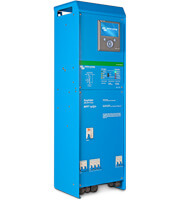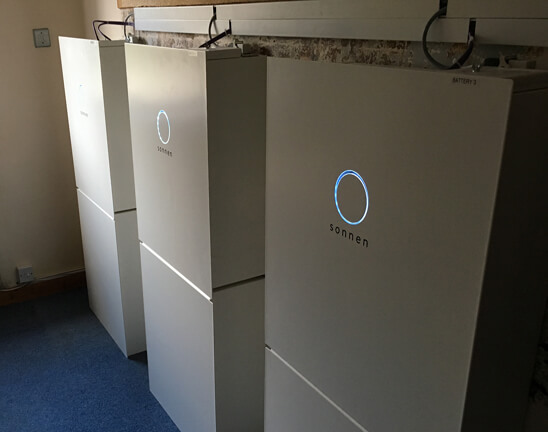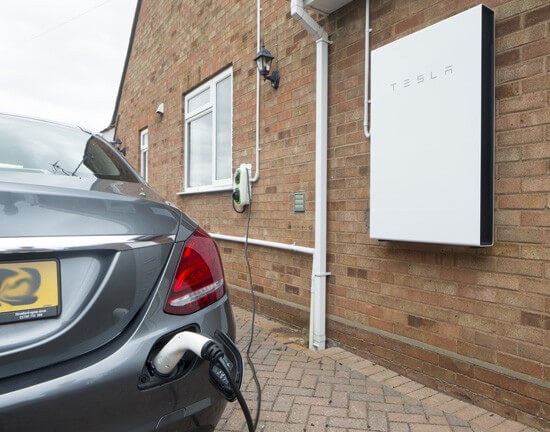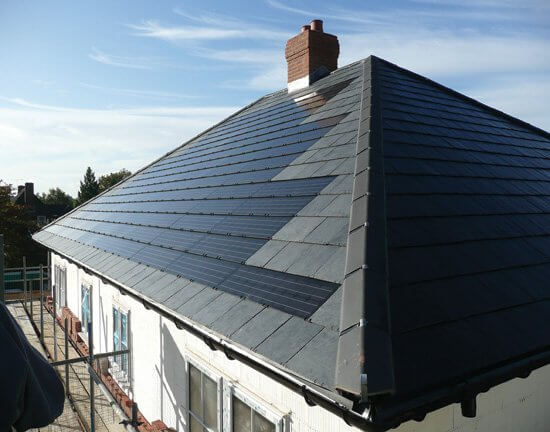How does a home backup battery system work?
It sounds easy – there’s a power cut and so you just run your home off the battery instead. Sadly, it’s a little trickier than that, so here are the key things you’ll need to consider.
The main complexity with using batteries for backup power is that they have to comply with strict safety requirements. If there’s a power cut, engineers will need to work on the electricity lines on the grid, and there cannot be the risk of any form of generation or batteries making this live while they carry out their works. It is for this reason that solar inverters turn off in the event of a power cut.
It is possible to run a home off a battery during the power cut, but the controls for a conventional home battery are not currently good enough – if they don’t operate 100% perfectly, there would still be the risk of electrocution, and if the battery does not operate properly it does not ‘fail safe’.
Instead, backup battery systems have a relay to physically disconnect the electricity supply in a building from the grid (called islanding). It’s essentially a big switch, which detects that the drop in voltage on the grid in the event of a power cut, and disconnects the home from the grid. It needs to be located between your incoming supply and your main fuseboard, so you will need space for this.
This is what the Tesla Back-up Gateway does, for example.
How much storage capacity do I need for a back-up battery in my home?
You’ll need to decide what percentage of your storage capacity you want to reserve for backup. This means you keep your battery partially full with your emergency electricity. Most people are using home batteries for storing solar electricity, but battery levels can be low in the mornings. The worst thing would be to invest in a back-up battery system and have no stored electricity in the event of a morning power cut!
Getting the balance right will be crucial, and the reserve will be a portion of the battery capacity you do not use every day. If you set the reserve capacity too low, you won’t have much energy in the event of a power cut. If you set the reserve capacity too high, you won’t have the room to fully utilise the battery for its main job of storing excess solar electricity, thereby lengthening your return on investment. In practice, getting a back-up option is likely to require a bigger battery than just using it for storing and using your own slar electricity.
What appliances can I run off the battery during a power cut?
Home batteries have an integrated inverter that produces AC power for use in the home. The higher the rated power output of the battery inverter, the higher instantaneous power can be delivered to appliances at any one time. If you want to run lots of power hungry appliances from the battery during the power cut you’ll need a high-powered battery inverter.
When running a conventional on-grid battery system, peaks in power are often met by the grid. If your battery has a 2kw inverter, and you turn on a 3kW kettle, then it will source 2kW of power from the battery and 1 kW from the grid. During a power cut this wouldn’t be possible.
So, if you want the battery to run during a power cut, it will need a large inverter – so for example the 5kW of power available from the Tesla Powerwall2 would be able to run the kettle.
What if there’s not enough power from the battery?
If you do try to use more power than the battery inverter can provide, you might trip the battery inverter, and still end up with no power during the power cut! And of course, as the transition from grid to battery is smooth, you may not realise there is a power cut actually occurring. So how do you stop yourself turning on high power loads?
The only way to make this fool-proof is to separate critical and non-critical loads within the house, and run them off different circuits. All your LED lighting, efficient fridges, gas boilers, laptops, phones and even modern LED TVs take very little electrical energy to run and can be powered by most battery systems for extended periods of time. High powered appliances such as power showers, kettles, microwaves and electric cookers would be on a non-critical circuit that the battery cannot power.
However, this could mean a major re-wire for your building. Separating critical from non-critical loads in your house could be expensive and time consuming. In a recent situation, we found a tumble dryer was on the same circuit as a fridge freezer, so to separate them we’d need to run two separate ring mains to the kitchen. It’s not always the case, but separating appliances to different circuits could involve long cable runs back to the fuse board, re-chasing cables into walls and even re-decoration.
Changeover switches
Instead of separating critical loads, in some situations it may be possible to fit a physical changeover switch. In the event of a power cut you would turn off the non-essential loads and physically flick a switch to get back-up power.
Will solar panels charge the battery when the grid goes down?
You’d assume it would, right? Unfortunately, it’s not always the case. More “cost efficient” backup systems will just discharge their stored energy when the grid goes down and the solar will turn off. This is partly due to the fact that if the battery inverter is smaller than the solar inverter then the solar inverter could overload the battery system. More expensive battery systems can be charged by the solar when the grid goes down. To do this, the battery inverter will have a higher capacity than the solar. Once the battery is full, the solar will either turn off or, if the systems can talk to each other, the solar will ramp down to match the building’s load exactly.
Are there any other changes needed?
The UK and Europe have different earthing regulations to the US and Australia. Back-up systems in the UK will need to be able to swap to a local earth if the house normally uses the grid as its earth. This is something our engineers will determine at the point of survey.
So is it worth it?
In 2015, there were 640 power outages affecting over 2.5m people for an average of 50 minutes.
So although power cuts are rare, they are disruptive when they do occur. Furthermore, some areas, especially rural locations, are more prone to power cuts than others.
You’ll need to balance the extra cost of a back-up battery system against the benefits of riding through the power cut.
Further Reading
- It’s not just back-up power – here’s our guide to how a home battery works to capture more of your solar energy
- Check out some of our pioneeering battery storage projects
- Here’s how our expert engineering team work with you on your residential energy project















